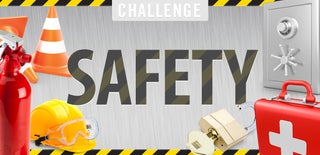Introduction: Upside Down Fire - Winter Cooking
We all think of campfire cooking as being a summer activity - and some would say that is for very good reason! But the winter months are long, especially here in the UK where summer seems to consist of just a few bright warm days scattered between relentless grey days of drizzle. Outdoor living doesn't need to end just because the weather isn't playing ball! When our family got cabin fever from being stuck inside in the snow last winter, I suggested we go have a cook-out down our allotment. The kids thought I was mad and that we'd never be able to get a fire going in the snow. It was a great opportunity to show them how to build a hot, efficient, upside-down fire.
Upside-down fires are great. They give off more heat with less smoke than regular fires, and are more efficient, meaning they need less tending and less fuel adding to them. The fact that they also break just about every rule the scouts teach you about how to start a fire is a bit of an added bonus - onlookers won't believe it works until they see it for themselves!
Step 1: Find Your Materials Under the Snow
The first job of order is to find a safe place to have your fire and cook your food. You want to choose a site that does not have any deep holes that might jar your ankle. You can't see through the snow. So take your time, especially if you have people that depend on you like we have brought along.
We choose a flattish site where we know there is nothing but grass underneath. Using bricks from a pile I collected earlier in the yea, we bricked out an area for the fire. Moved some benches closer so it was more comfortable. Brought the fire wood out of the sheds, so it was nice and dry.
If its winter make sure you are well wrapped, its easy to become cold when you are not being active. Wear scarfs, gloves, boots and warm clothes. Point to note, as you will be around a fire you want to ensure that you do not have anything that will dangle and catch fire. ALSO, in the UK we have strict laws on flammability of clothing, wear clothes that don't burn easy!
Step 2: Build Upside Down Fire
The upside down fire is something that I have been using for years and didn't realise that other people don't use this technique in winter. So based on this new discovery I am going to share it.
What is an upside down fire?
Basically, you put all the fuel for the fire underneath it. So most people are taught to build fires small and slowly add larger fuel to the mix. The upside down fire starts with the larger material at the bottom and works its way up to the smallest material. Personally I put all my large material at the bottom and then build a traditional fire on top. This works great for me.
Why do I want to use and upside down fire?
The benefits of an upside down fire is:
- You keep your fire off the snow, so when the snow melts it goes below your fuel or combustible material. There fore staying dry and not extinguishing itself.
- You get the heat from the fire quicker, its reflected off the larger logs beneath.
- You don't need to keep feeding the fire and can enjoy cooking for longer without having to refuel.
- If you do need to refuel you can just add material like a normal fire.
- You can enjoy being warm without having to add material to the fire.
How does it work?
Basically the heat from the top fire heats and dries the fuel. This then ignites in a controlled manor, the embers and fire falls down to the lower layers as it burns through.
Step 3: Setup Kitchen and Cook Food
So, its hard to keep your food and utensils on top of the snow. They have a tendency to sink into the snow and get lost. To avoid this we setup a camp kitchen, which was really an old UV damaged table that we had lying around. We also utilised a stack of pallets as a makeshift table.
To cook on the fire we utilised a cast iron grill we keep around for cooking on the fire. We oiled it and then put it onto some embers to heat the iron. Once hot, we mixed up the embers and started cooking a mix of sausages. Make sure you cook slowly and heat your food all the way through. It is important to ensure your food is piping hot, it should have changed colour inside, be steaming and be above 70 degrees in the center.
Making sure you drink is important when out on the snow, keep hydrated. We made cups of tea and hot chocolate.
Step 4: Eat and Enjoy Your Hard Work
So after a hard mornings work of building fires and drinking hot chocolate, a nice sausage or two in the snow is very rewarding. Followed up with more hot chocolate, a snowman and snow ball fight.
Making is good fun.

Runner Up in the
Camping Food Challenge

Participated in the
Safety Challenge

Participated in the
Outside Contest













